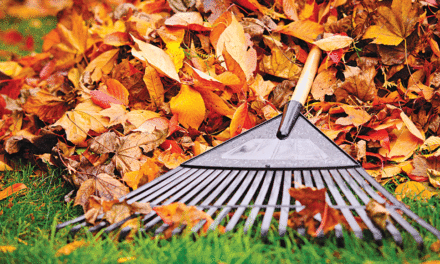Cold frames can give plants a head start on the seasons and sometimes even extend the season, and are great for starting plants from seeds.
A cold frame is nothing more than a bottomless box sunk into the earth and roofed over with glass or plastic. The ideal position for a cold frame is facing toward the south on a slope. It is good to have the glass or plastic door at a 45-degree angle to allow for the rains and snows to slide off. The heat from the day will keep the box warm at night.
You do need to open the door when air temperatures in the cold frame reach 90 degrees, since you could be harming the plants.
When constructing the cold frame, you can use concrete blocks, bricks, or rot-resistant lumber.
Cover the frame with a set of old storm doors or other old windows or make a frame and cover it in plastic. Place an outdoor thermometer inside to view the inside temperatures without opening the box.
* * *
Here are some tips to schedule for this month:
WEEK ONE
• Cut a few stems of holly with berries for making Christmas garlands. It’s early, but now’s the time to do it, before the birds eat all the berries. Stand them in a bucket of water in a sheltered spot where birds can’t take them.
• For all evergreens, camellias, rhododendron, azaleas, viburnum, and even roses, consider using Wilt-Pruf. This product will seal in the moisture and help protect the plant from winter’s bitter drying winds and protect the crown of newly planted shrubs when freezing and thawing cycles occur. One application will be enough for the winter season.
WEEK TWO
• If you have sandy loam soils in your vegetable garden consider adding fresh cow or horse manure. This will allow enough time for the manure to decompose and be ready for spring to provide the much-needed organic matter for your garden.
• Before the first anticipated hard freeze be sure to water all your trees and shrubs, including bulbs and perennial beds. As these drought conditions continue you will need to provide at least an inch of rain per week, remember: if the sky doesn’t provide the rain you need to water! Allowing the soil to completely dry out will provide no moisture protection for the roots of your trees and shrubs when the ground freezes. Remember just because the air temperatures are cooler, the ground temperatures will sometimes remain warmer longer. Watering is a must!
WEEK THREE
• Aerate your lawn now – there’s still time to do it before winter sets in. You can either use a lawn aerator or simply insert a garden fork at regular intervals and lean it back slightly to let air in.
• Once your perennial and annual beds are all cleaned up, keep checking on them to make sure any dandelions and any other weeds haven’t taken root. They are easy to spot now and are easy to pull up and dispose of before they can grow.
WEEK FOUR
• Fertilize your bramble fruits now, including raspberries and blackberries. Use a fertilizer high in organics which will feed now and jump-start the spring growing season. We recommend Plant-tone by Espoma.
• It is not too late to transplant any tree or shrub in your landscape. Sometimes things are planted too close to the house or they just simply outgrow the allotted area. Since the plants have gone dormant, it is more likely they will come through the transplanting well. Be sure to use Wilt-pruf for all evergreens to seal in the moisture and apply Espoma’s Bio-tone when planting to prevent the plant from going into transplant shock and provide much needed microbes for good root development.
(Editor’s Note: Ken Morgan is the owner of Robin’s Nest Floral and Garden Center in Easton, Md.)




